Implementation of a Novel Inertial Mass System and Comparison to Existing Mass-Rig Systems for Shake Table Experiments
Abstract
:1. Introduction
2. Research Approach
3. Inertial Systems for Shake Table Tests
3.1. Inertial Mass Supported by the Specimen
3.2. Inertial Mass Supported by an External System
4. Proposed System
4.1. System Description
4.2. Advantages and Disadvantages
4.3. Equation of Motion
4.4. Calculation of the Lateral Force
4.4.1. Using a Load Cell
4.4.2. Using the Equation of Motion
4.5. Calculation of P-∆ Force
4.6. Calculation of the Damping Coefficient
5. Numerical Comparison of the Existing Mass-Rig Systems
5.1. Numerical Modeling of the Inertial Systems
5.1.1. Model I
5.1.2. Model II
5.1.3. Model III
5.2. Comparison and Discussion
6. Concluding Remarks
Author Contributions
Funding
Institutional Review Board Statement
Informed Consent Statement
Data Availability Statement
Acknowledgments
Conflicts of Interest
References
- Pinho, R. Shaking Table Testing of RC Walls. ISET J. Earthq. Technol. 2000, 37, 119–142. [Google Scholar]
- Elwood, K.; Moehle, J.P. Shake Table Tests and Analytical Studies on the Gravity Load Collapse of Reinforced Concrete Frames; PEER Report 2003/01; University of Berkley: Berkeley, CA, USA, 2003. [Google Scholar]
- Deierlein, G.; Krawinkler, H.; Ma, X.; Eatherton, M.; Hajjar, J.; Takeuchi, T.; Kasai, K.; Midorikawa, M. Earthquake resilient steel braced frames with controlled rocking and energy dissipating fuses. Steel Constr. 2011, 4, 171–175. [Google Scholar] [CrossRef]
- Van de Lindt, J.W.; Pryor, S.E.; Pei, S. Shake table testing of a full-scale seven-story steel-wood apartment building. Eng. Struct. 2011, 33, 757–766. [Google Scholar] [CrossRef]
- Panagiotou, M.; Restrepo, J.I.; Conte, J.P. Shake-table test of a full-scale 7-story building slice. Phase I: Rectangular wall. J. Struct. Eng. 2011, 137, 691–704. [Google Scholar] [CrossRef]
- Schoettler, R.; Restrepo, J.; Guerrini, G.; Duck, D.; Carrea, F. A Full-Scale, Single-Column Bridge Bent Tested by Shake-Table Excitation; PEER Report 2015/02; University of Berkley: Berkeley, CA, USA, 2015. [Google Scholar]
- Carrillo, J.; Alcocer, S. Improved external device for a mass-carrying sliding system for shaking table testing. Earthq. Eng. Struct. Dyn. 2011, 40, 393–411. [Google Scholar] [CrossRef]
- Carrillo, J.; Gonzalez, G.; Llano, L. Evaluation of mass-rig systems for shaking table experiments. Dyna 2012, 79, 159–167. [Google Scholar]
- Lopez, A.; Dusicka, P.; Bazaez, R. Performance of seismically substandard bridge reinforced concrete columns subjected to subduction and crustal earthquakes. Eng. Struct. 2020, 207, 110216. [Google Scholar] [CrossRef]
- McKenna, F. OpenSees: A Framework for Earthquake Engineering Simulation. Comput. Sci. Eng. 2011, 13, 58–66. [Google Scholar] [CrossRef]
- Bairrao, R.; Vaz, C. Shaking table testing of civil engineering structures-The LNEC 3D simulator experience. In Proceedings of the 12th World Conference on Earthquake Engineering, Auckland, New Zealand, 30 January–4 February 2000; pp. 1–8. [Google Scholar]
- Mosalam, K.M.; Naito, C.J.; Khaykina, S. Bidirectional cyclic performance of reinforced concrete bridge column superstructure subassemblies. Earthq. Spectra 2002, 18, 663–687. [Google Scholar] [CrossRef]
- Sakai, J.; Jeong, H.; Mahin, S.A. Reinforced concrete bridge columns that re-center following earthquakes. In Proceedings of the 8th US National Conference on Earthquake Engineering, San Francisco, CA, USA, 18–22 April 2006; Volume 9, pp. 5270–5279. [Google Scholar]
- Ge, X.; Dietz, M.S.; Alexander, N.A.; Kashani, M.M. Nonlinear dynamic behaviour of severely corroded reinforced concrete columns: Shaking table study. Bull. Earthq. Eng. 2020, 18, 1417–1443. [Google Scholar] [CrossRef] [Green Version]
- Laplace, P.; Sanders, D.; Saiidi, M.S.; Douglas, B. Shake Table Testing of Flexure Dominated Reinforced Concrete Bridge Columns; Report CCEER99-13; Center for Earthquake Engineering Research, Department of Civil Engineering, University of Nevada: Reno, NV, USA, 1999. [Google Scholar]
- Chopra, A. Dynamic of Structures. Theory and Applications to Earthquake Engineering, 2nd ed.; Prentice-Hall: Englewood Cliffs, NJ, USA, 2001. [Google Scholar]
- Taucer, F.F.; Spacone, E.; Filippou, F.C. A Fiber Beam-Column Element for Seismic Response Analysis of Reinforced Concrete Structures; Report UCB/EERC-91/17; Earthquake Engineering Research Center, College of Engineering, University of California: Berkekey, CA, USA, 1991; Volume 138. [Google Scholar]
- Scott, M.H.; Fenves, G.L. Plastic hinge integration methods for force-based beam-column elements. J. Struct. Eng. 2006, 132, 244–252. [Google Scholar] [CrossRef]
- Berry, M.P.; Eberhard, M.O. Performance Modeling Strategies for Modern Reinforced Concrete Bridge Columns; PEER Report 2007/07; University of Berkley: Berkeley, CA, USA, 2008. [Google Scholar]
- Neuenhofer, A.; Filippou, F.C. Evaluation of nonlinear frame finite-element models. J. Struct. Eng. 1997, 123, 958–966. [Google Scholar] [CrossRef]
- Mander, J.B.; Priestley, M.J.N.; Park, R. Theoretical Stress-Strain Model for Confined Concrete. J. Struct. Eng. 1988, 114, 1804–1826. [Google Scholar] [CrossRef] [Green Version]
- Elwood, K.J.; Eberhard, M.O. Effective stiffness of reinforced concrete columns. ACI Struct. J. 2009, 106, 476–484. [Google Scholar]
- Ghannoum, W. Experimental and Analytical Dynamic Collapse Study of a Reinforced Concrete Frame with Light Transverse Reinforcement. Ph.D. Thesis, University of California, Berkeley, CA, USA, 2007. [Google Scholar]
- Mehary, S.; Dusicka, P.; Bazaez, R. Effect of Subduction Earthquake-Based Loading History on Substandard RC Square Columns. J. Bridg. Eng. 2018, 23, 04017146. [Google Scholar] [CrossRef]

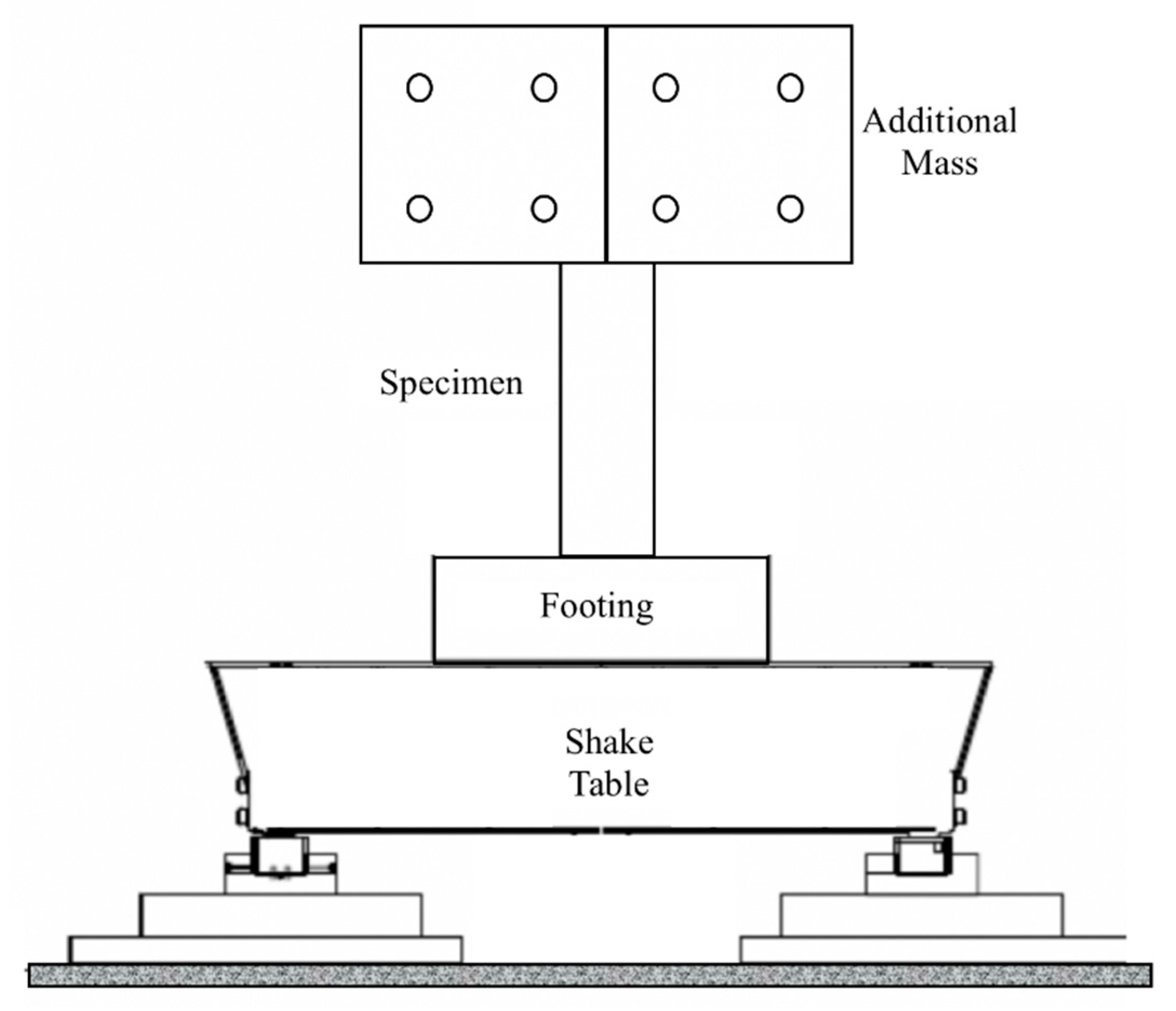

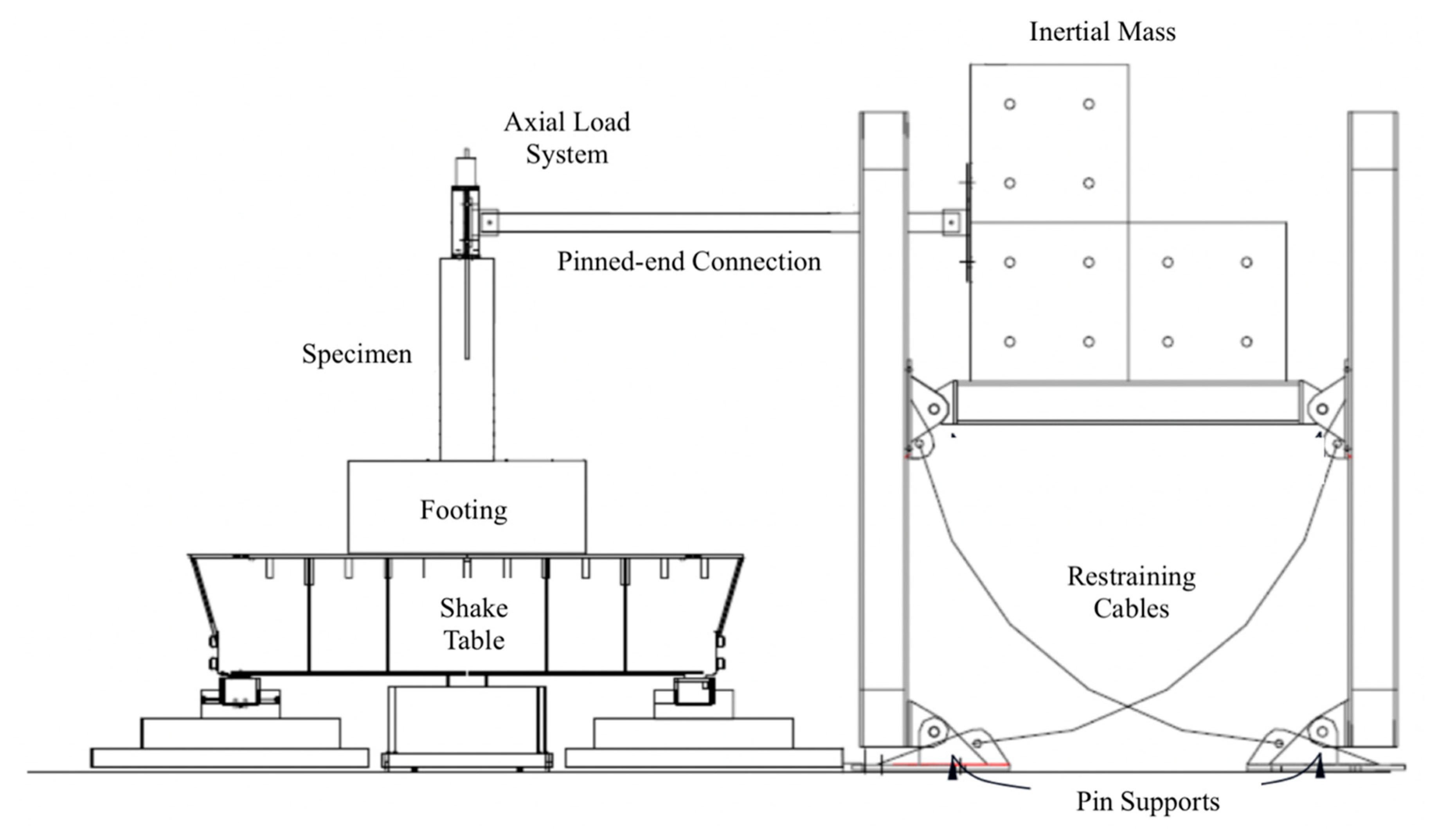
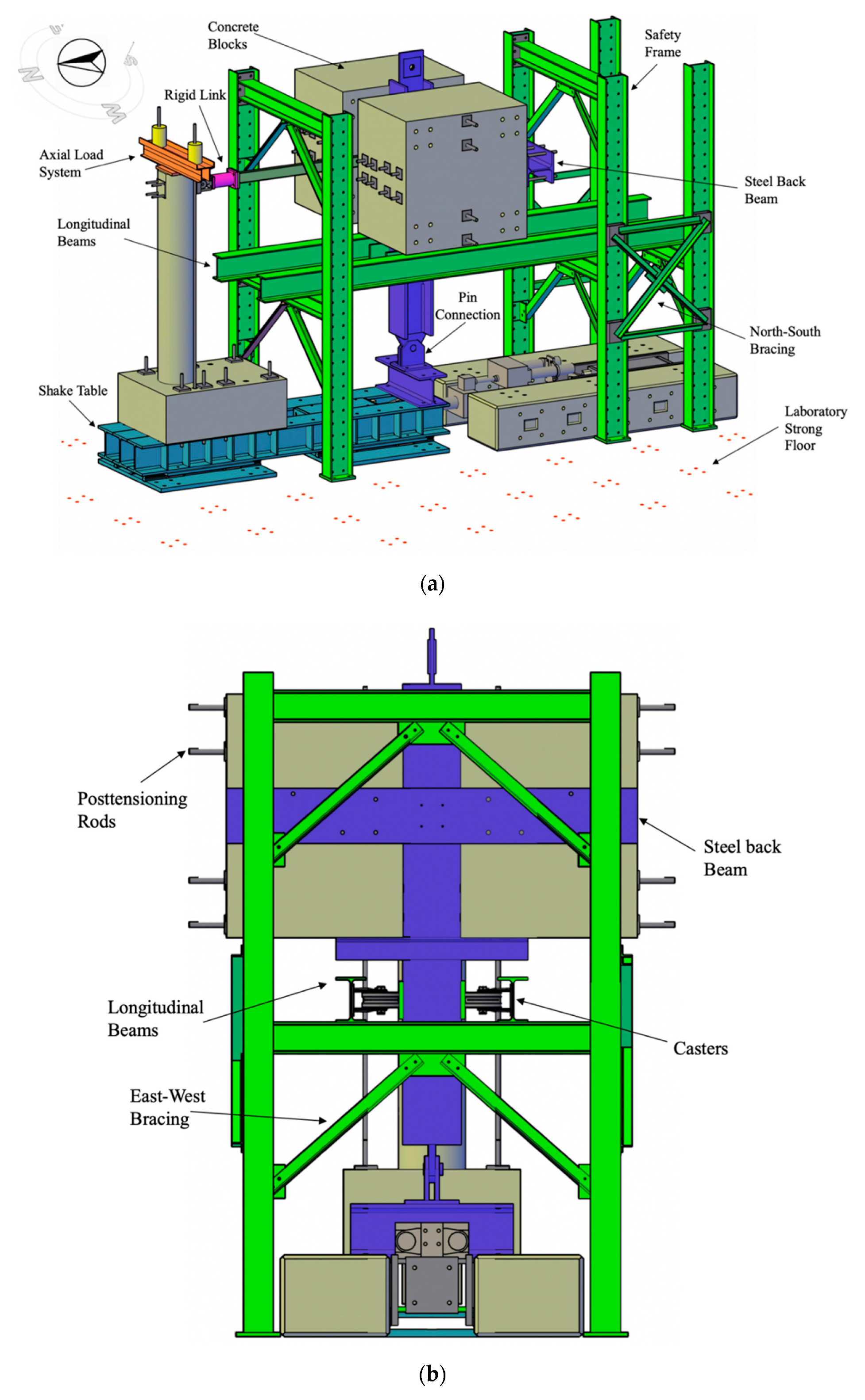



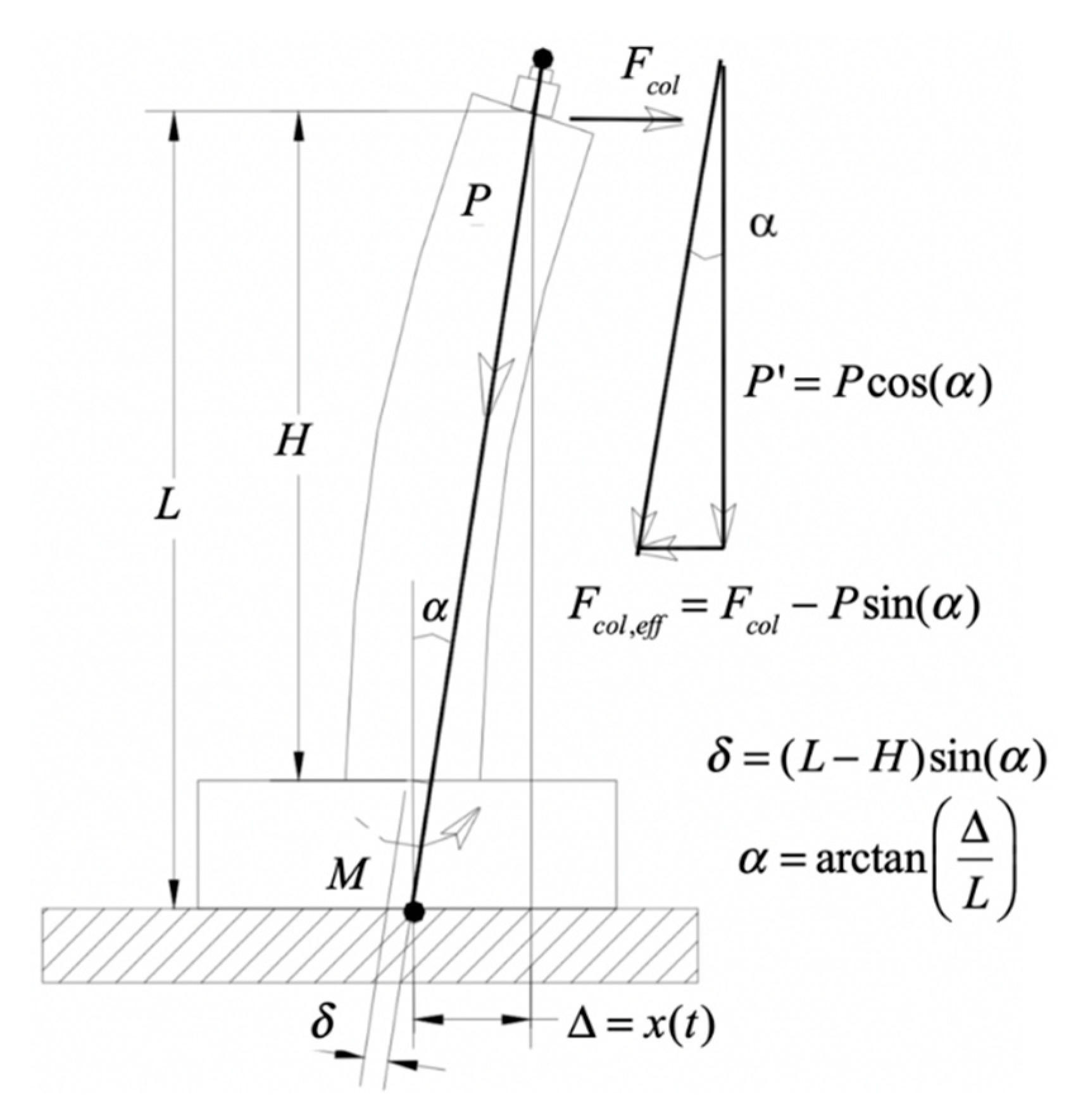
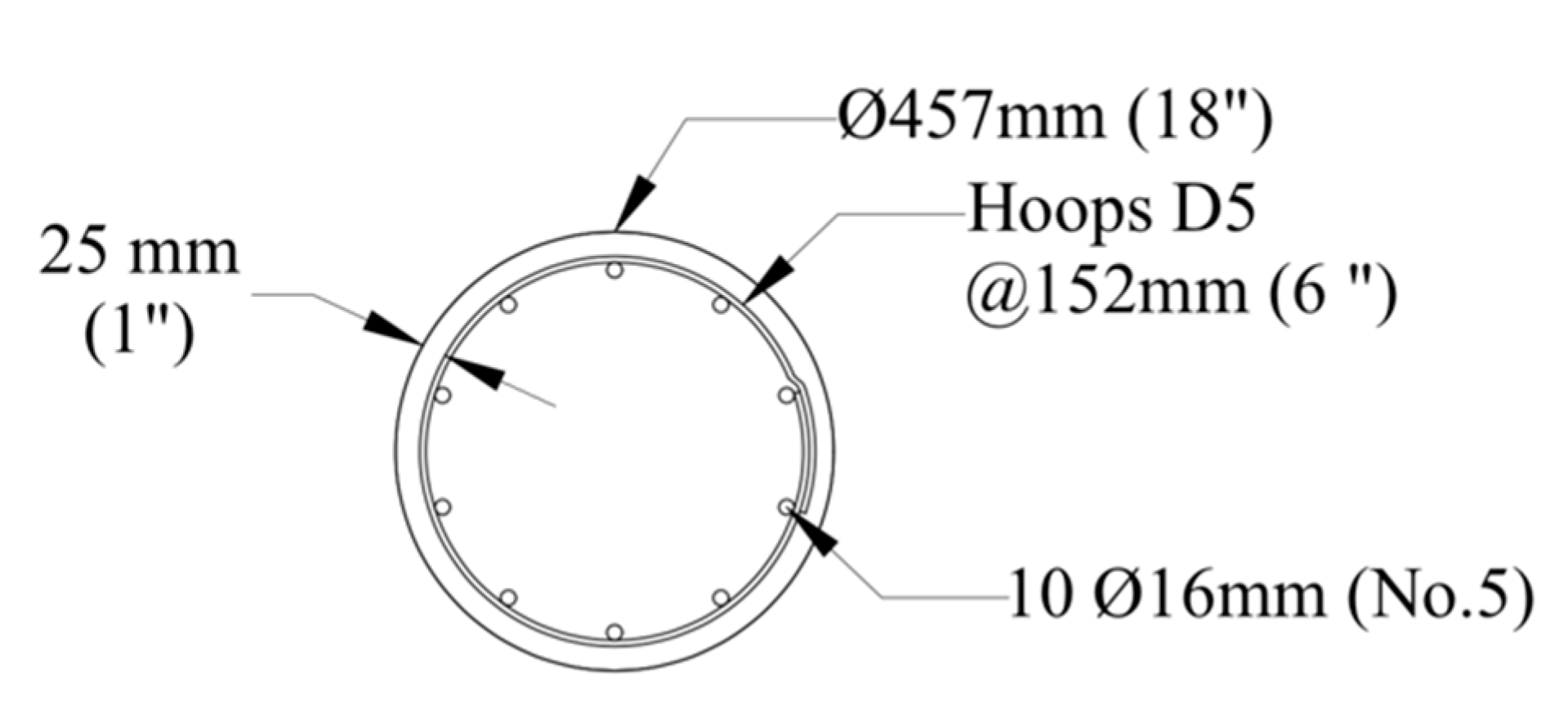

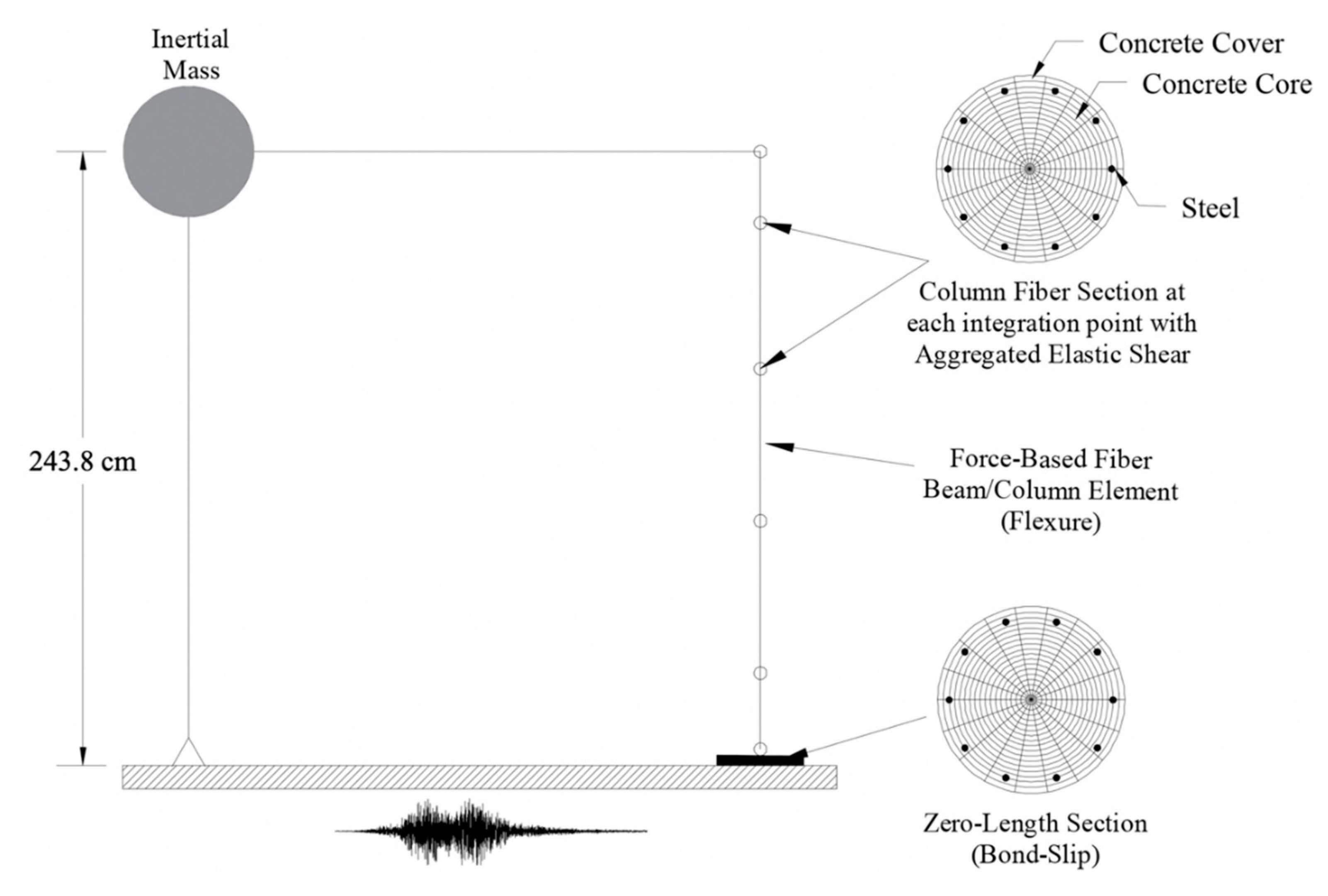


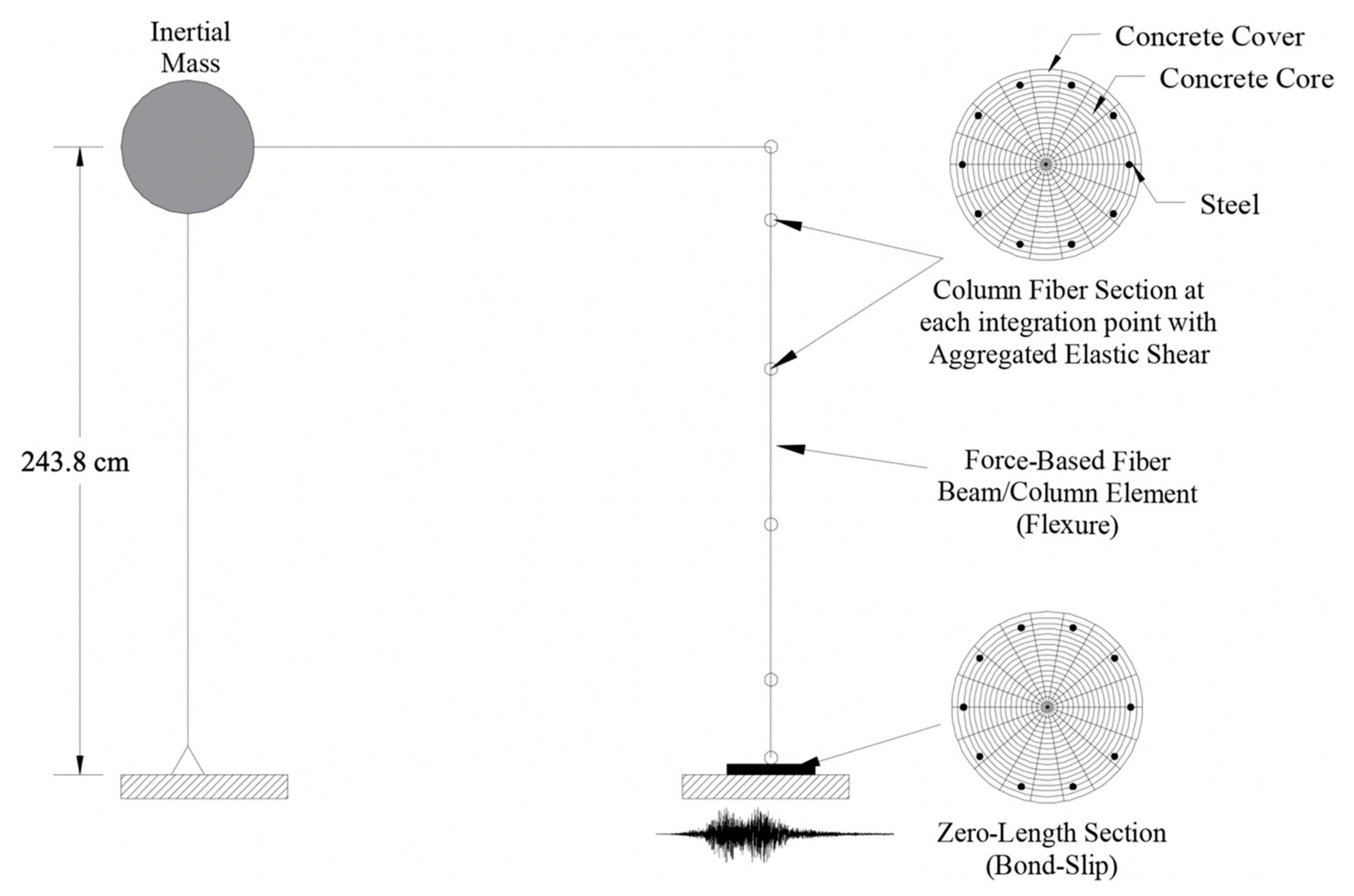
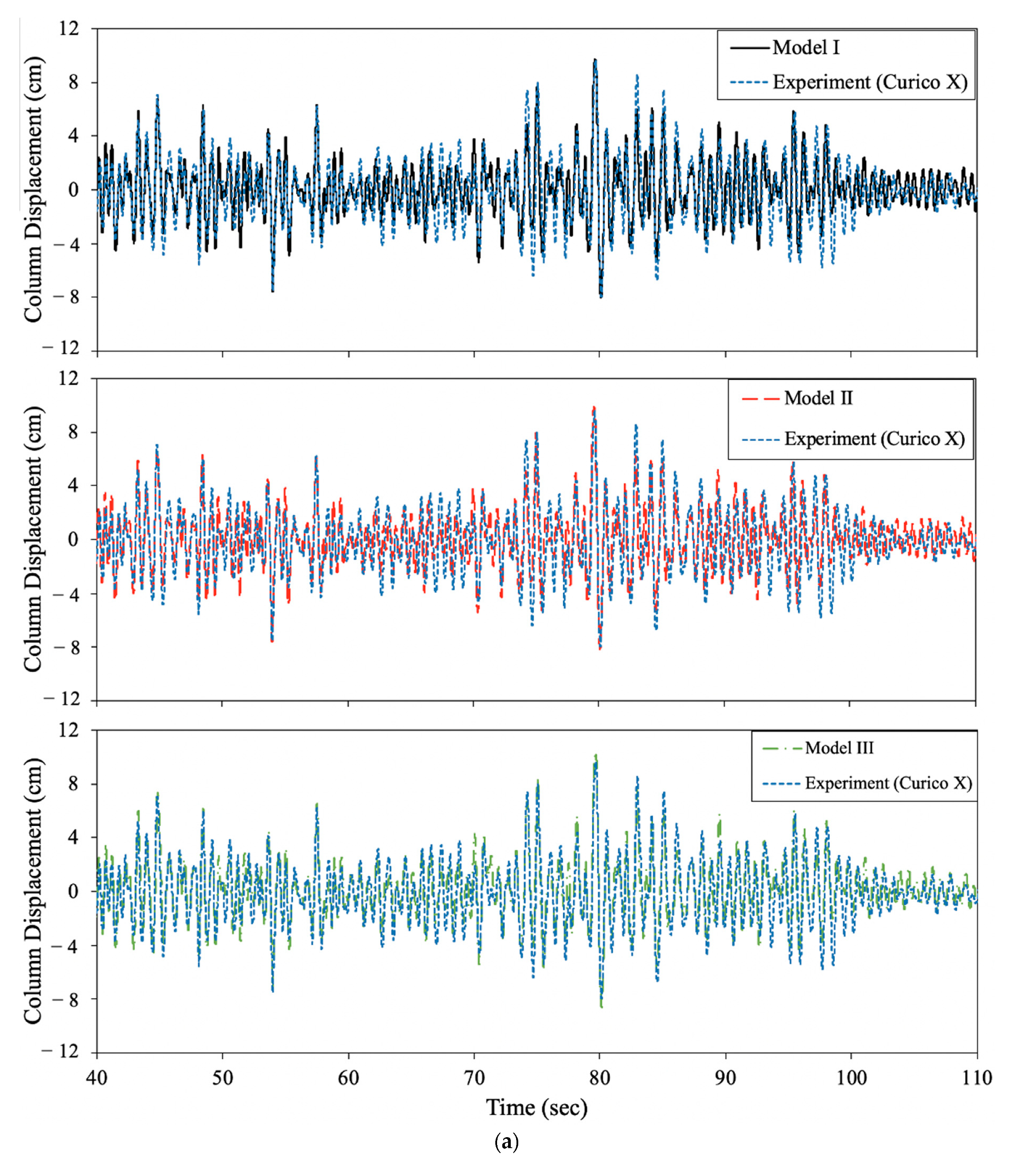


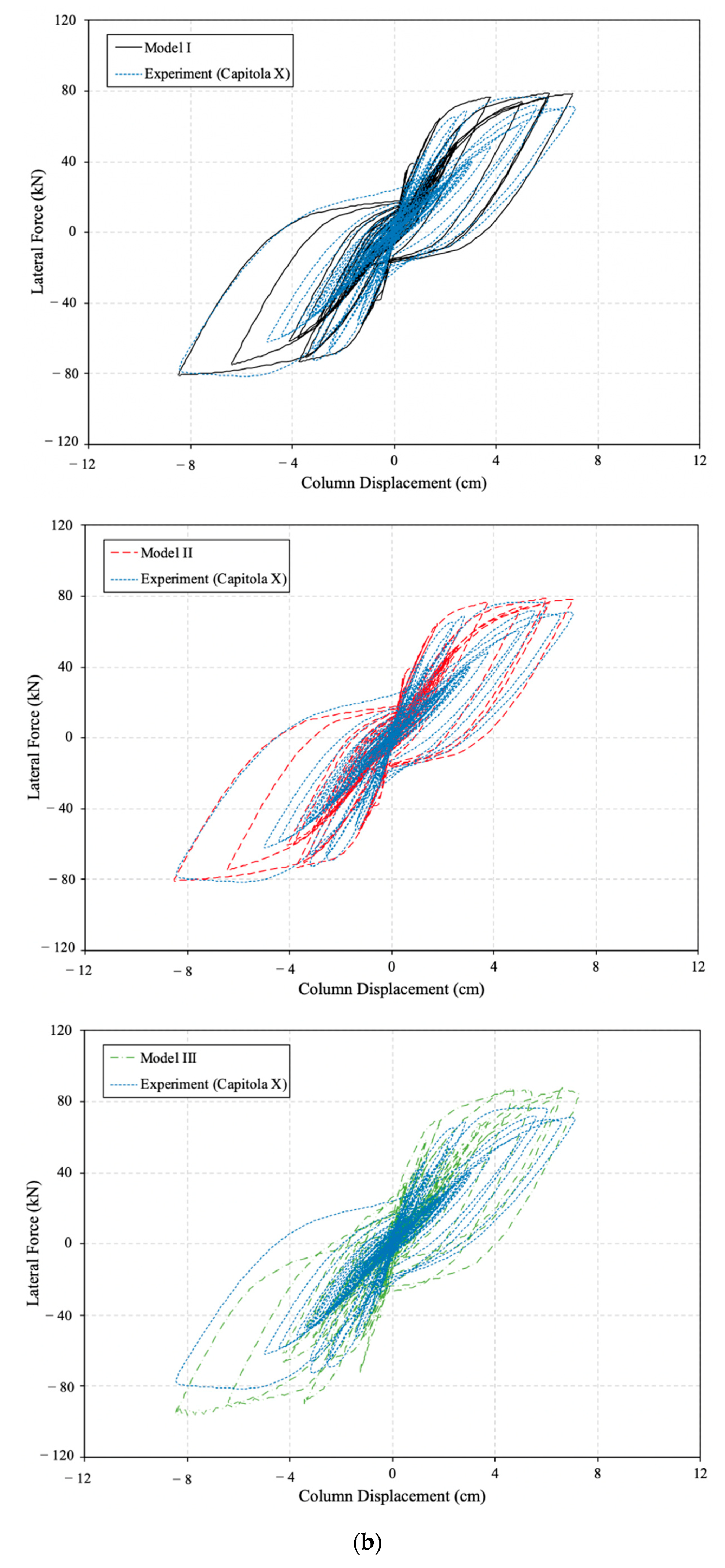
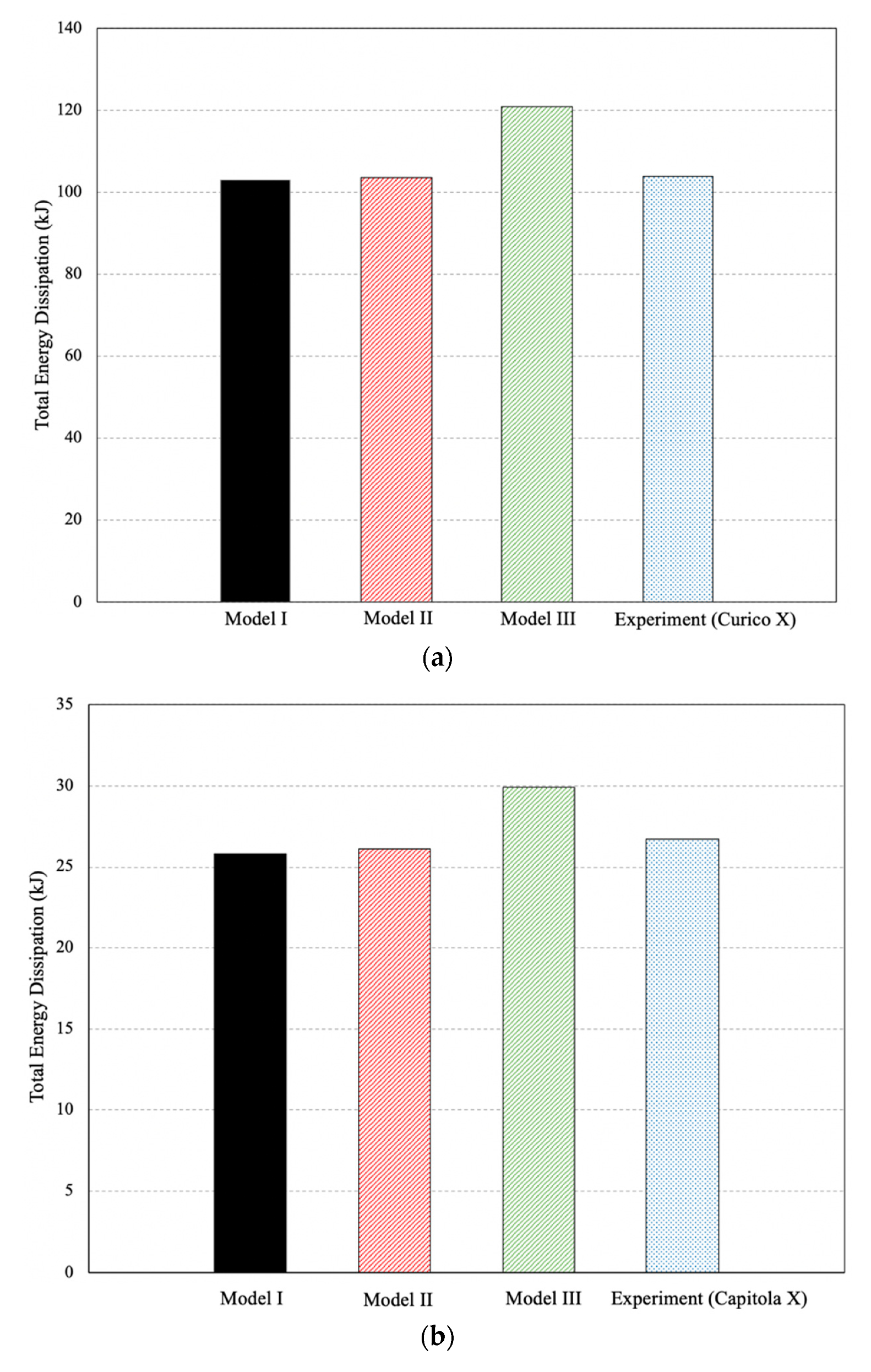
| Component | Mass (kg) | Weight (kN) |
|---|---|---|
| m1 = concrete blocks, W-beam, portion of steel column mass | 20,636 | 202.4 |
| m2 = rigid link system | 136 | 1.3 |
| m3 = axial load system | 236 | 2.3 |
| m4 = distributed mass of specimen contributing to effective inertia | 1061 | 10.4 |
| ψ1 | 0.22 | |
Publisher’s Note: MDPI stays neutral with regard to jurisdictional claims in published maps and institutional affiliations. |
© 2021 by the authors. Licensee MDPI, Basel, Switzerland. This article is an open access article distributed under the terms and conditions of the Creative Commons Attribution (CC BY) license (http://creativecommons.org/licenses/by/4.0/).
Share and Cite
Lopez, A.; Dusicka, P. Implementation of a Novel Inertial Mass System and Comparison to Existing Mass-Rig Systems for Shake Table Experiments. Appl. Sci. 2021, 11, 692. https://doi.org/10.3390/app11020692
Lopez A, Dusicka P. Implementation of a Novel Inertial Mass System and Comparison to Existing Mass-Rig Systems for Shake Table Experiments. Applied Sciences. 2021; 11(2):692. https://doi.org/10.3390/app11020692
Chicago/Turabian StyleLopez, Alvaro, and Peter Dusicka. 2021. "Implementation of a Novel Inertial Mass System and Comparison to Existing Mass-Rig Systems for Shake Table Experiments" Applied Sciences 11, no. 2: 692. https://doi.org/10.3390/app11020692






